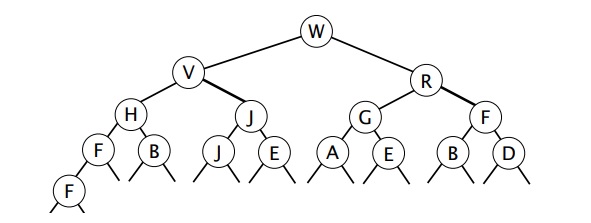(c) For implementing a max-priority queue, which of the following are advantages of a resizing-array implementation of a heap over a sorted linked list? Circle all that apply.
expected time for insert is lower
expected time for delMax is lower
expected storage cost is lower
insert has lower worst-case order of growth
delMax has lower worst-case order of growth
max has lower worst-case order of growth
Answer to above question

- Give the array that represents the correct max heap after deleting the max.
- Consider the process of creating a max heap from an arbitrary text file containing
N integers. What is the order of growth of the run time of the best possible
algorithm for this process?
Answers